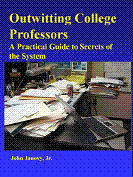Papers in the Biological Sciences

John J. Janovy, Jr. Publications
Document Type
Article
Date of this Version
6-2003
Abstract
Two hundred and twenty-four anurans of 6 species (47 adults and 16 tadpoles of Rana blairi, 35 R. catesbeiana, 31 Hyla chrysoscelis, 30 adults and 46 tadpoles of Pseudacris triseriata triseriata, 11 Bufo woodhousii, and 8 Acris crepitans) from Pawnee Lake, Lancaster County, Nebraska, were surveyed for coccidian parasites during March 2001 to May 2002. Of these, 23 of 30 (77%) adults and four of 46 (9%) tadpoles of P. t. triseriata shed oocysts of Isospora cogginsi n. sp. Oocysts of I. cogginsi were ovoid, 19.3 × 15.1 (18-23 × 11-20) μm, with a thin, smooth, colorless, single-layered wall, with no micropyle or oocyst residuum. Sporocysts were ovoid, 13.3 × 9.9 (11-15 x 9-13) μm, with a thin, colorless, smooth wall, and Stieda body absent. Sporocyst residuum was present, 5.5 × 5.3 (4-7 x 4-7) μm, consisting of numerous granules. Histological examination of frogs and tadpoles infected with the new species revealed endogenous stages including mature meronts, developing microgamonts, mature microgametes, mature macrogamonts, and young unsporulated oocysts located in the cytoplasm of the epithelial cells of the small intestine. Concurrently, two adult P. t. triseriata shed oocysts of Eimeria streckeri. Oocysts of E. streckeri were spherical, 15.7 × 15.4 (14-17 × 14-19) μm, with a thin, smooth, single-layered, colorless wall with an oocyst residuum composed of numerous granules surrounding a large vacuolated area, with a previously undescribed globularlike body present within the vacuole, and no micropyle. Sporocysts were ovoid, 9.1 × 6.1 (7-10 × 5-7) μm, with a thin, colorless, smooth wall with a Stieda body and sporocyst residuum. Our results are the first to document infection of adult and tadpole stages of frogs of the same species with the same species of coccidian, indicating that adult frogs may contaminate breeding ponds with oocysts during their breeding season and infect tadpoles directly by the ingestion of sporulated oocysts.


Comments
Published in the Journal of Parasitology (June 2003) 89(3): 522-528. Copyright 2003, the American Society of Parasitologists. Used by permission.